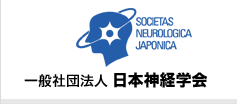- HOME
- Vol.61 No.2
- CLINICA NEUROL, 61: 120−126, 2021
- Vol.61 No.2 contents
Case Report
A case of proximal-type Hirayama disease associated with neck axial rotation
Uka Tsuzuki, M.D.1)2), Tetsuo Ando, M.D., Ph.D.1), Makoto Sugiura, M.D., Ph.D.1) and Osamu Kawakami, M.D., Ph.D.1)
1)Department of Neurology, Anjo Kosei Hospital
2)Tsuzuki Clinic
Hirayama disease is characterized by juvenile onset of unilateral muscular atrophy of a distal upper extremity. The pathogenic mechanism of Hirayama disease is cervical cord compression by the posterior dura with forward displacement in the neck flexion position. A few cases of 'proximal-type Hirayama disease' have been described as showing muscular weakness and atrophy of the proximal upper extremities caused by the pathogenic mechanism similar to that of Hirayama disease. We report herein the case of a 16-year-old boy with proximal-type Hirayama disease, who developed symptoms after he began kyudo (Japanese traditional archery). Neurological examination revealed bilateral weakness of the muscles innervated by C5 and C6 segments (the deltoid, biceps brachii, brachioradialis), bilateral mild sensory disturbance in the radial side of the forearm, absent tendon reflexes of the biceps brachii and brachioradialis with preserved triceps reflex, pyramidal signs of the bilateral lower extremities (pathologically brisk reflexes of lower extremities, Babinski's signs). MR images in the neck flexion position showing expansion of the posterior extradural space and forward displacement of the spinal cord at the C3/4, C4/5, C5/6 and C6/7 disk levels. CT myelogram revealed spinal cord compression not only in neck flexion but also in neck left axial rotation. His symptoms improved after the restriction of neck flexion and axial rotation. Weakness of the upper extremities improved after 2 months. Pyramidal signs of the lower extremities disappeared after 18 months. The pathogenic mechanism in this case may be associated with not only neck flexion but also neck axial rotation.
Full Text of this Article in Japanese PDF (5264K)
Full Text of this Article in English HTML
(CLINICA NEUROL, 61: 120−126, 2021)
key words: Hirayama disease, juvenile muscular atrophy of unilateral upper extremity, juvenile type of distal and segmental muscular atrophy of upper extremities, neck axial rotation, flexion myelopathy
(Received: 9-Jul-20)


